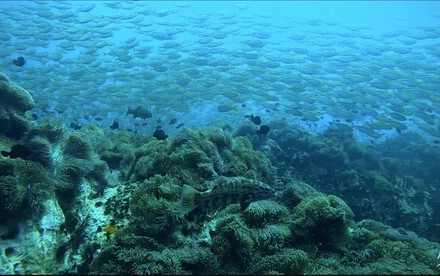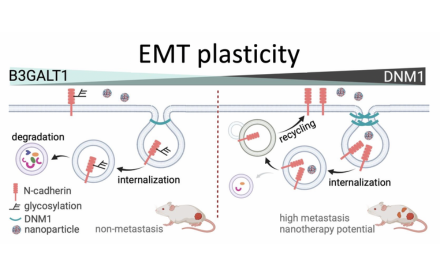06 Jun 2023
Undergraduate Alumna’s Research Discovers New Proxy for Methane Seepage Activities

Photos of a methane seep site at Vestnesa Ridge, Svalbard. Photo credit: Geological Survey of Norway (NGU), Trondheim, Norway
Our undergraduate alumna, Rachel Wai Ching CHU, who majored in Ecology & Biodiversity and graduated in 2019, began investigating methane seepage during her final year of undergraduate studies at the School of Biological Sciences as part of the capstone requirement for her major.Under the supervision of Dr Moriaki YASUHARA from the School of Biological Sciences and The Swire Institute of Marine Science, this research has recently been published in the highly respected and prestigious peer-reviewed scientific journal Geology. The article, titled ‘Late Quaternary paleoceanography of Vestnesa Ridge, Fram Strait: Ostracode species as a potential indicator of cold seep activity’, explores the topic of methane seepage and its potential indicators. Geology has been published by the Geological Society of America since 1973 and is a leading journal in the field of earth science.
An investigation on how Methane levels impact our environment
Methane is a potent greenhouse gas and is often portrayed as a significant contributor to global warming and climate change. A large quantity of methane is trapped in the deep ocean under high pressure and low temperature. At different times throughout geological history, part of it was released into the water and then into the atmosphere, thereby changing the climate.
The release of methane is called methane seepage. Rachel’s paper investigates the strength of methane seepage activities in the Vestnesa Ridge during the Late Quaternary using two paleo-proxies: ostracod assemblages and carbon isotopes in foraminifera.
Ostracods and foraminifera are two sand-grain-sized animals used by palaeontologists as micro-fossils to study environmental changes in the past. The paper suggests that one of the ostracod species found, Rosaliella svalbardensis, to be an indicator of moderate methane release since it was only present during moderate methane release, absent when there is no methane release or the activity is too strong. By discovering a reliable proxy for methane seepage activities, researchers can learn more about past seepage activities and their impacts on climate and the ecosystem.
From FYP to Published Research
Moriaki and his team specialise in palaeontology, and Rachel started volunteering in the Yasuhara Lab during the summer of her second year of undergraduate studies. Her involvement continued until her graduation and the research on methane seepage began as her final year project as part of the capstone requirement for her major. This career-oriented capstone course is designed for students interested in pursuing a career in academia. It imitates the academic environment and requires students to complete a research project of their choosing under the supervision of one of the topmost professors at The University of Hong Kong.
Rachel described the entire experience as transformative, she said, ‘Paleo-related studies are rare in Hong Kong, and our curriculum did not cover much about it. Therefore, I owe everything I know in this field to Moriaki and his team, who tirelessly taught me from the very basics. Rachel said the capstone course provided her with an opportunity to experience a research project from start to finish, ‘No matter how fancy or detailed the lectures are, they cannot compete with hands-on experience, from wet-sieving the samples and identifying the species to analysing the data and coming up with a paper. Without these valuable experiences, I would have never known about the existence of this often overlooked yet the wonderful field of palaeontology, let alone pursuing an MPhil in this area now.’
Visit the Yasuhara Lab's website here.
Click here to learn more about HKU BSc Ecology & Biodiversity Major.
Journal Title: ‘Late Quaternary paleoceanography of Vestnesa Ridge, Fram Strait: Ostracode species as a potential indicator of cold seep activity (Geology, 2023)’
The journal paper can be accessed here.
.jpeg)
Profile: Rachel Chu
2020 - Present MPhil Student of Environmental Sciences, CUHK
2015 - 2019: Bachelor of Science majored in Ecology and Biodiversity with a minor in Marine Biology and Spanish, HKU







